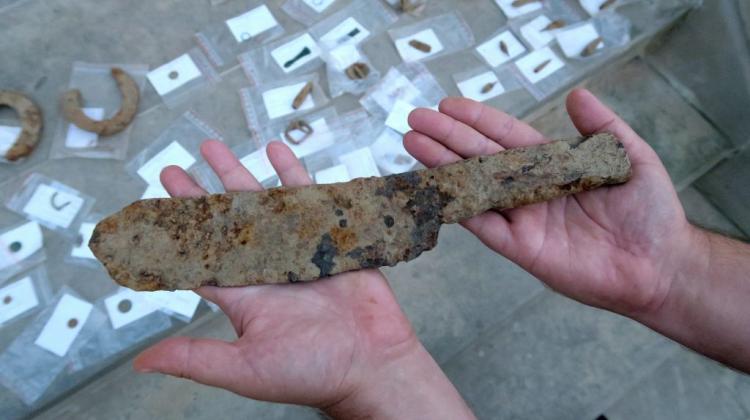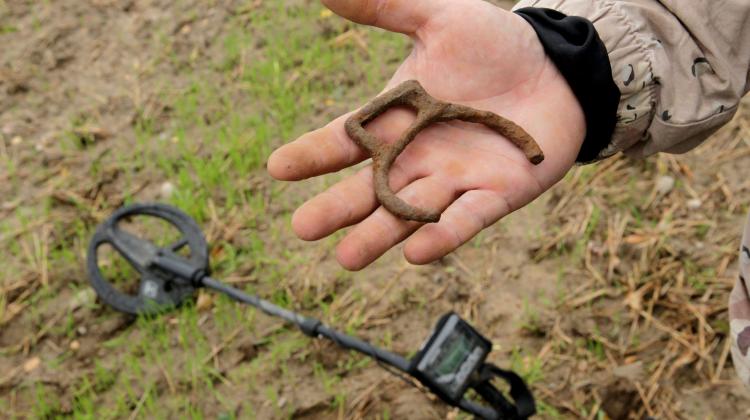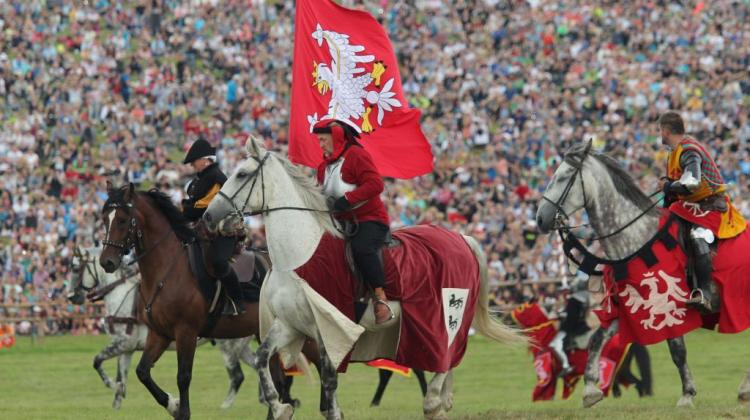Archaeological research in the fields of the Battle of Grunwald completed

Nearly 150 artefacts, including numerous arrowheads and crossbow bolts, found the participants of archaeological research in the area of Grunwald. The purpose of research completed on September 17 was to help identify the exact place where the camp of the Teutonic Knights was located in 1410.
More than 50 archaeologists and detectorists from Denmark, Norway, the UK and Poland, equipped with metal detectors, searched the areas near the village of Grunwald for traces of one of the biggest battles of the Middle Ages. According to the organizers, they found nearly 150 items, including arrowheads and bolts, fragments of weapons, fittings of medieval belts and coins, including Jagiellonian penny from the fifteenth century.
According to Dr. Szymon Drej, director of the Grunwald Museum, which organized the search, the historical value of the acquired artefacts can only be assessed after their conservation. "These objects are often so corroded that they require additional research" - he explained.
Drej told PAP that the find, which pleased him the most, was an "inconspicuous piece of metal", which is most likely a zapona, a circular brooch used to fasten the coat.
"If this is confirmed, we can assume that this brooch was used to fasten a Teutonic Knight\'s surcoat, as it bears the inscription +Ave Maria+, suggesting the link to the Order of Brothers of the German House of Saint Mary in Jerusalem" - he said.
The purpose of this year\'s research was to help identify the exact place where the camp of the Teutonic Knights was located. Project participants checked the areas situated west of the ruins of the battle chapel, which was built at the command of the Grand Master Heinrich von Plauen in 1411. According to the descriptions of Jan Długosz, the heaviest fighting took place during the capturing of the camp by the Polish-Lithuanian army.
Head of archaeological and historical department of the Grunwald Museum, Dr. Piotr A. Nowakowski told PAP that the planned goal of the research project had been achieved. According to him, in addition to the acquisitions of valuable items, the accumulation of arrowheads and bolts from the times of the battle near the chapel confirmed that it had been built on the site of the Teutonic camp.
"We managed to draw the western border of the battlefield, in the area of today\'s road Grunwald-Łodwigowo, and positively verify the theory of Prof. Sven Ekdahl, according to whom that area was the place of the battle" - he said.
Prof. Ekdahl, who participated in the Grunwald, is a Swedish scientist and author of the hypothesis that the battle took place south of the place accepted in Polish historiography. According to him, the true place of the main battle were areas east and south of the village of Grunwald, and not - as Polish historians claim - east and south of Stębark.
Large-scale international research involving archaeologists and detectorists near Grunwald started in 2014. This year\'s search covered an area of approx. 100 hectares. Museum announced that work would continue in the coming seasons.
According to director Drej, the search methods may change next year, because - as he said - the current formula slowly comes to an end.
"The fact that we checked out an area using metal detectors does not mean that there\'s nothing left there. We need better equipment, which will reach deeper and show more. Such equipment is expensive, but we will try to buy it for the museum to have a better picture of what is left in the ground after the battle" - he said.
PAP - Science and Scholarship in Poland
mbo/ pro/ mrt/
tr. RL
Przed dodaniem komentarza prosimy o zapoznanie z Regulaminem forum serwisu Nauka w Polsce.


















